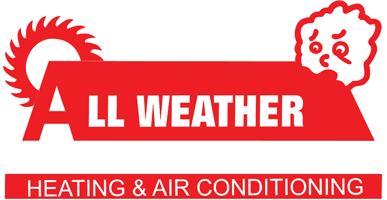
You shouldn’t have to sacrifice comfort or empty your wallet to keep your home at the right setting during the summer.
But what is the best temp, exactly? We go over recommendations from energy pros so you can select the best setting for your home.
Here’s what we advise for the most energy-efficient setting for air conditioning in Huntsville.
Recommended Thermostat Settings for Summer
Most households find setting the thermostat at 72-73 degrees is most comfortable. However, if there’s a major difference between your interior and outside temps, your electricity costs will be larger.
These are our recommendations based on the U.S. Department of Energy (DOE) and ENERGY STAR®.
While at home: 78 degrees. While that appears too high, there are approaches you can keep your house refreshing without having the air conditioner on frequently.
Keeping windows and blinds closed during the day keeps chilled air where it needs to be—inside. Some window treatments, including honeycomb shades or plantation shutters, are created to deliver extra insulation and improved energy conservation.
If you have ceiling fans in your house, the DOE says you can move thermostat settings about 4 degrees warmer without compromising comfort. That’s because they refresh by a windchill effect. As they cool people, not spaces, shut them off when you move from a room.
If 78 degrees still feels too warm on the surface, try running a trial for about a week. Get started by upping your thermostat to 78 degrees while you’re at your residence. Then, progressively decrease it while adhering to the ideas above. You may be shocked at how cool you feel at a warmer temperature setting.
While away: 88 degrees. There’s no need to keep the air conditioning running all day while your home is vacant. Moving the setting 7–10 degrees warmer can save you anywhere from 5–15% on your cooling expenses, according to the DOE.
When you get home, don’t be tempted to switch your thermostat below 78 to cool your residence more rapidly. This isn’t productive and often results in a bigger electrical cost.
A programmable thermostat is a helpful approach to keep your settings in check, but you have to set programs. If you don’t set programs, you might forget to change the set temperature when you take off.
If you need a hassle-free remedy, think over getting a smart thermostat. This thermostat connects with your phone, so it is aware when you’re at home and when you’re out. Then it intuitively changes temperature settings for maximum savings. How much exactly? An estimated $180 yearly on heating and cooling, according to ENERGY STAR.
Another perk of having a smart thermostat? You can use your phone to watch and regulate temperature settings from almost anywhere.
While sleeping: Around 70 degrees. While ENERGY STAR recommends 82 degrees, that may be unpleasant for most families. Most people sleep better when their bedroom is chilled, so that’s why the National Sleep Foundation suggests 60–67 degrees. But that might be too cool, depending on your PJ and blanket preference.
We advise trying a similar test over a week, putting your temp higher and gradually decreasing it to choose the ideal setting for your family. On mild nights, you might discover keeping windows open at night and running a ceiling fan is a superior idea than using the air conditioner.
More Ways to Save Energy This Summer
There are additional approaches you can save money on cooling bills throughout the summer.
- Buy an energy-efficient air conditioning system. Central air conditioners only last about 12–15 years and become less efficient as they age. An upgraded air conditioner can keep your residence comfier while keeping AC bills down.
- Schedule annual air conditioner tune-ups. Annual air conditioner maintenance keeps your system running like it should and could help it work at greater efficiency. It could also help prolong its life cycle, since it enables pros to discover seemingly insignificant troubles before they create a major meltdown.
- Change air filters frequently. Read manufacturer instructions for switching your air filter. A dusty filter can lead to your system short cycling, or switch on and off too often, and increase your utility.
- Inspect attic insulation levels. Almost 90% of houses in the U.S. don’t have adequate insulation, according to the Insulation Institute. The majority of southern climates should have 13–14” of attic insulation, while northern climates should have 16–18”.
- Have your ductwork inspected. Ductwork that has loosened over time can seep cool air into your attic, walls or crawl space. This can result in huge comfort troubles in your house, including hot and cold spots.
- Seal holes, doors and windows. Keep muggy air in its place by plugging holes. You can also caulk or weather strip doors to trap more cold air within your home.
Conserve More Energy This Summer with All Weather Heating & Air Conditioning Inc
If you need to use less energy during hot weather, our All Weather Heating & Air Conditioning Inc professionals can provide assistance. Reach us at 256-801-4701 or contact us online for additional info about our energy-saving cooling solutions.
